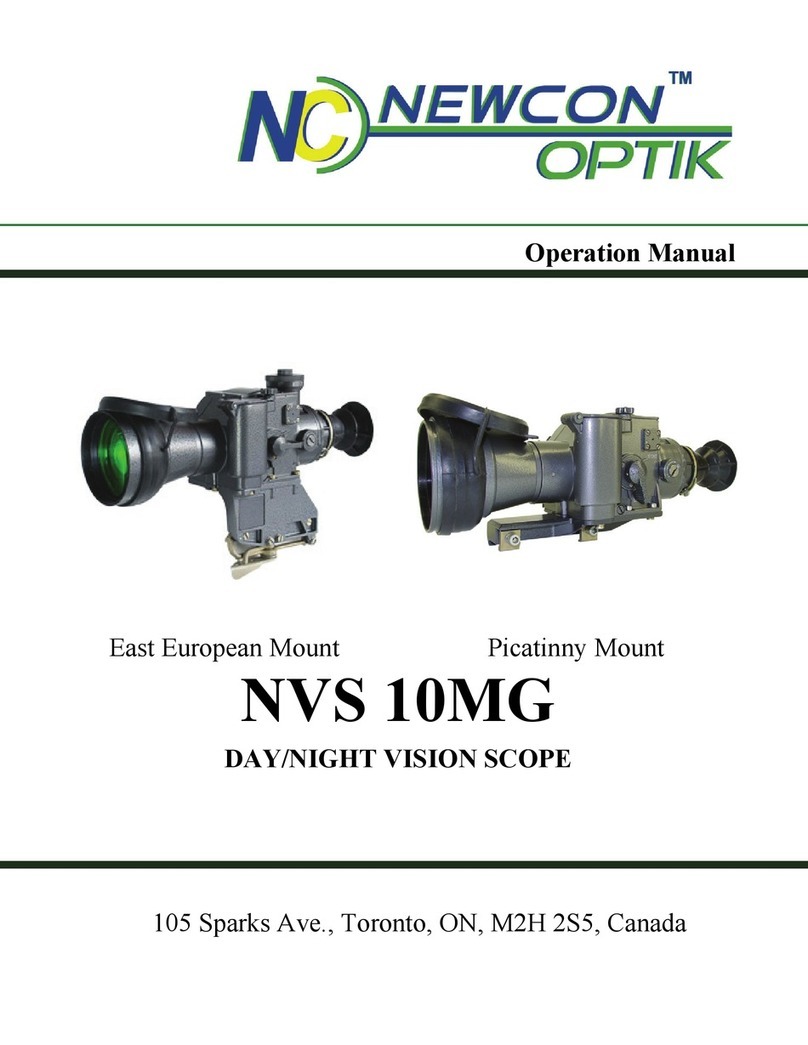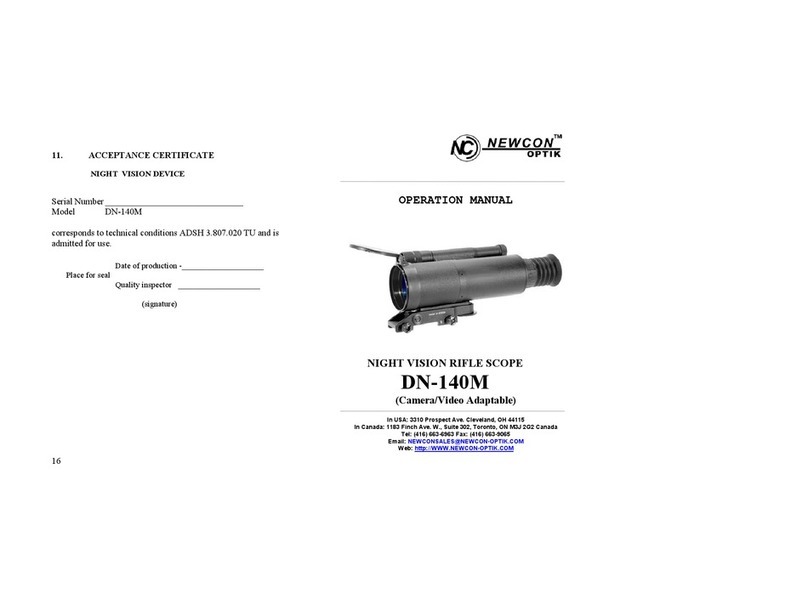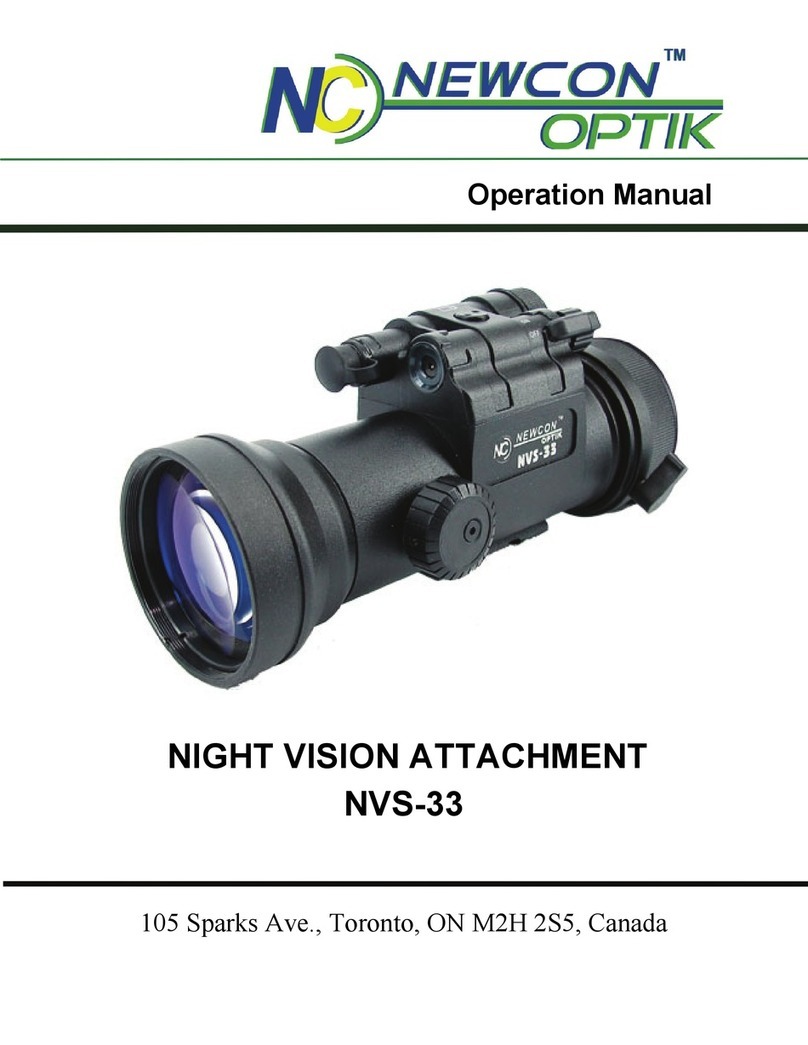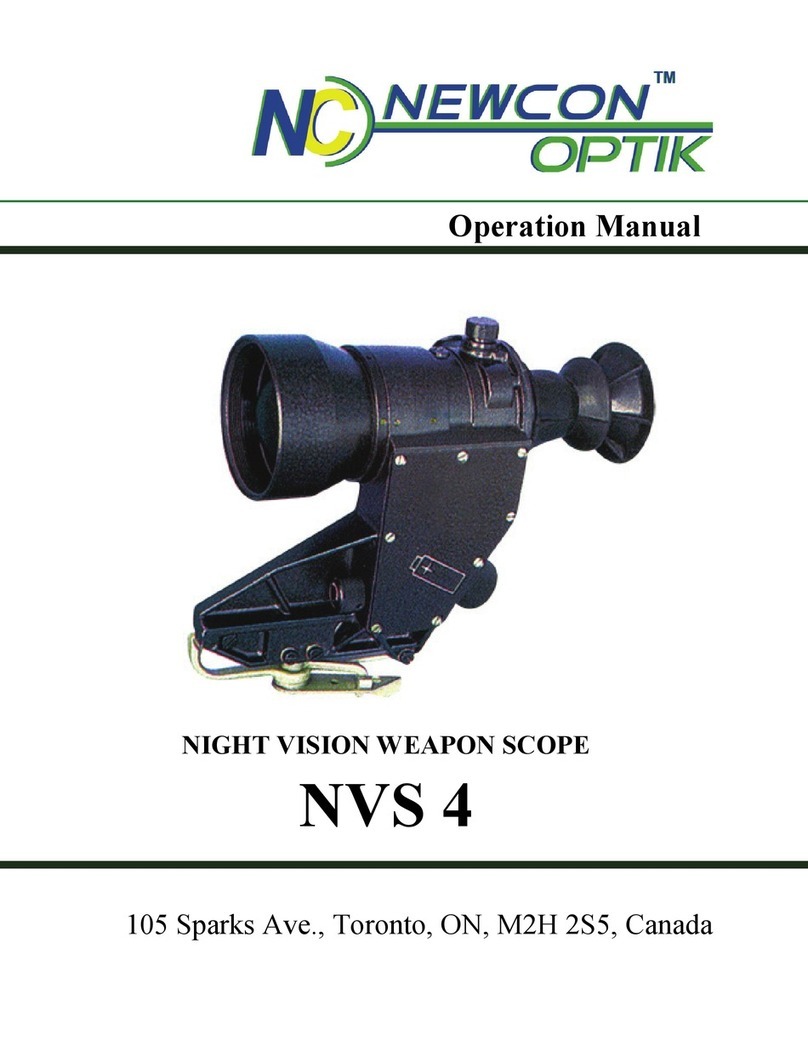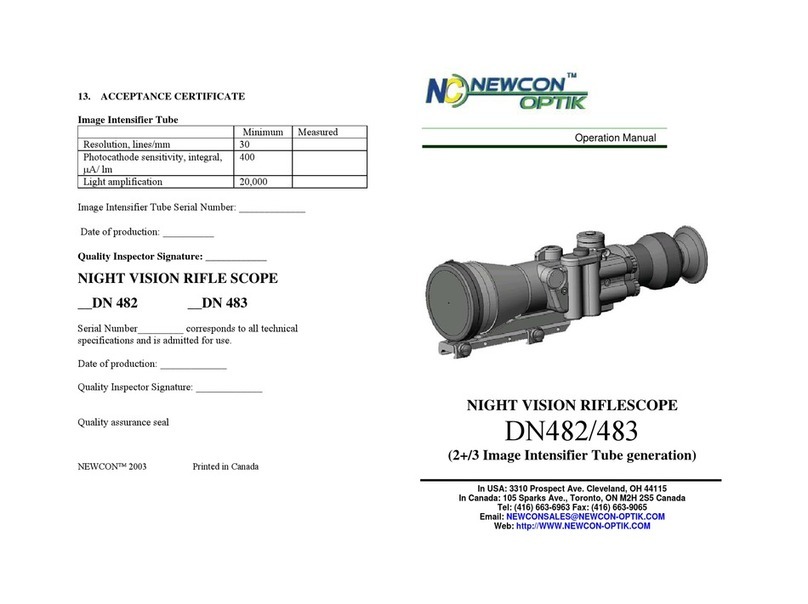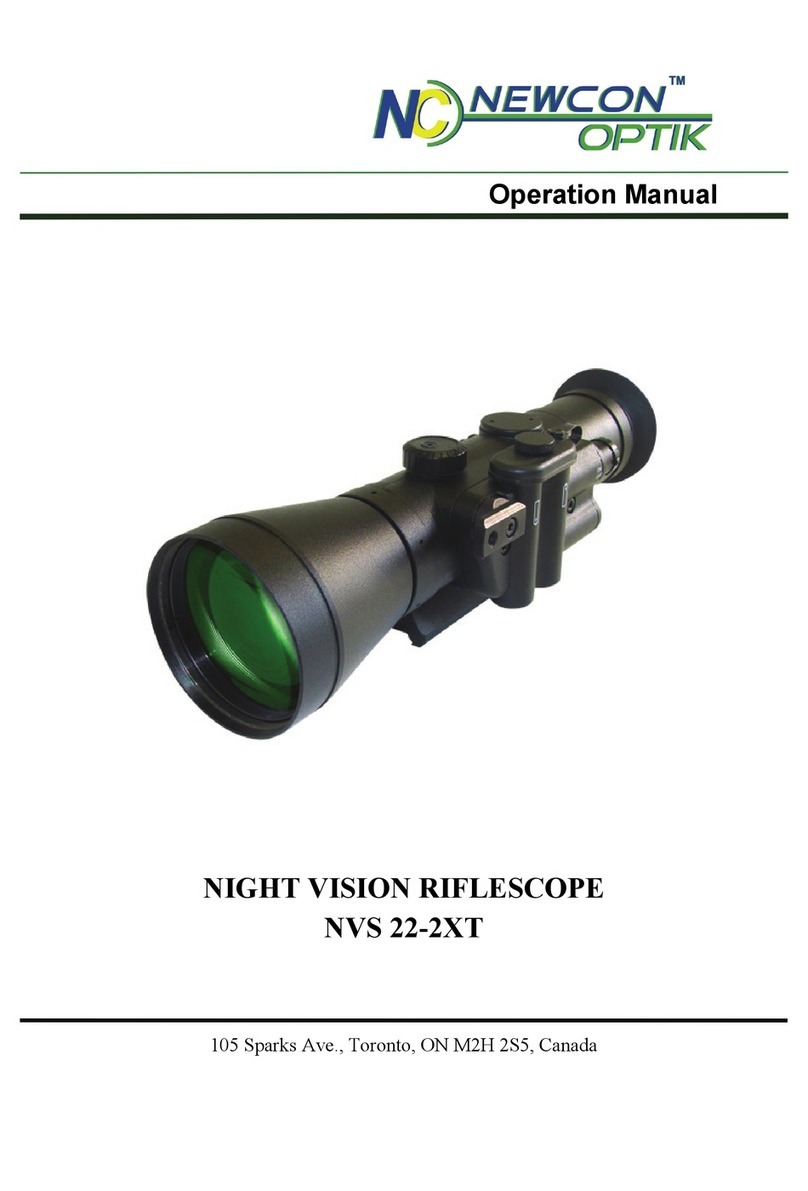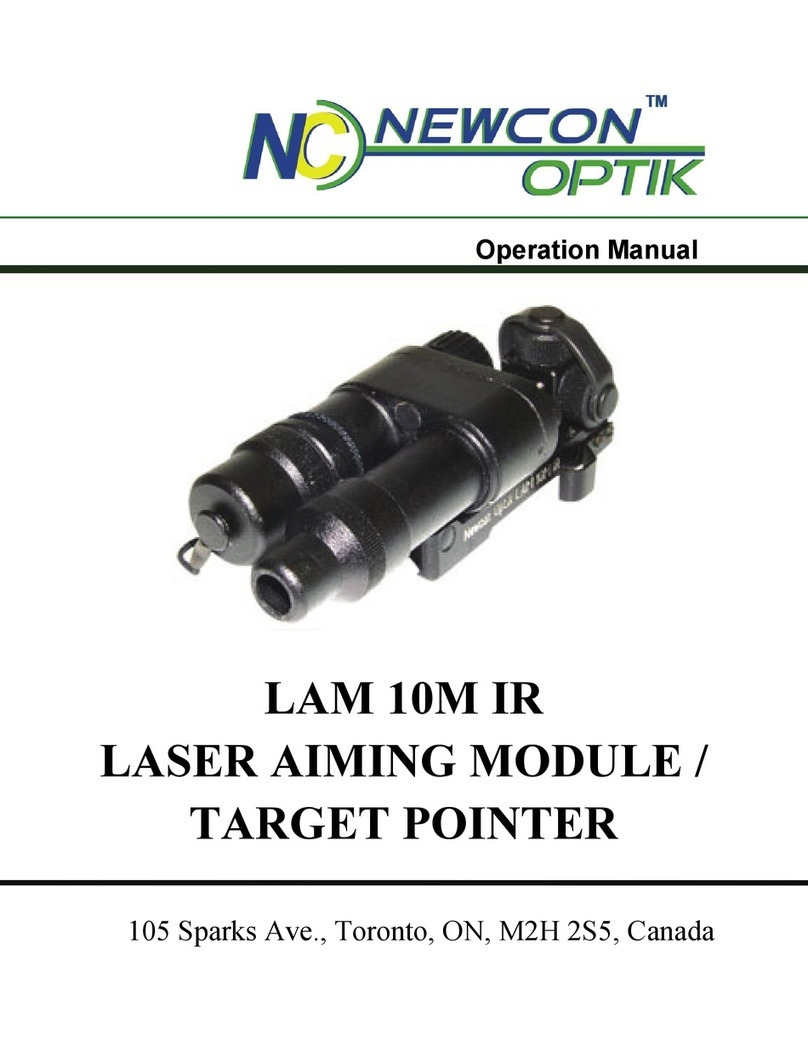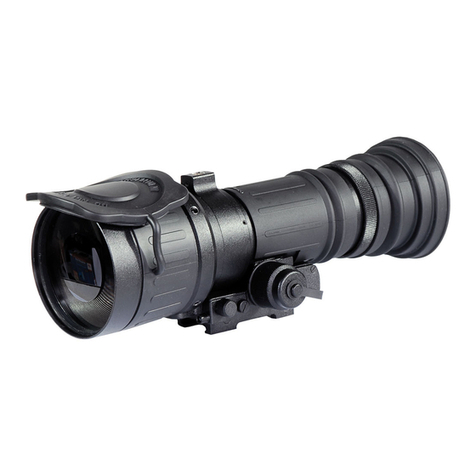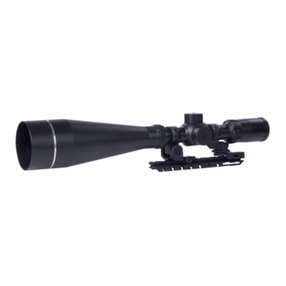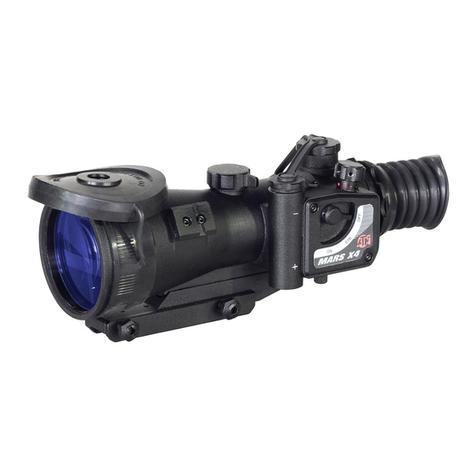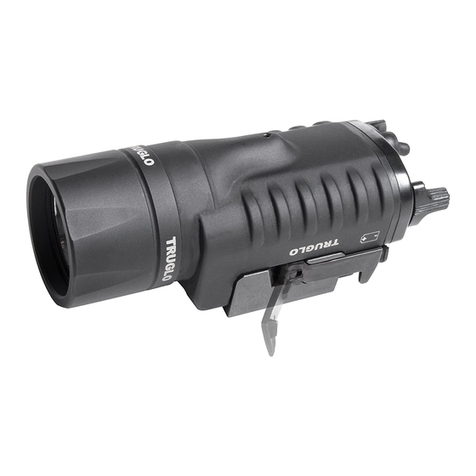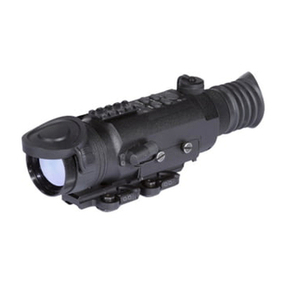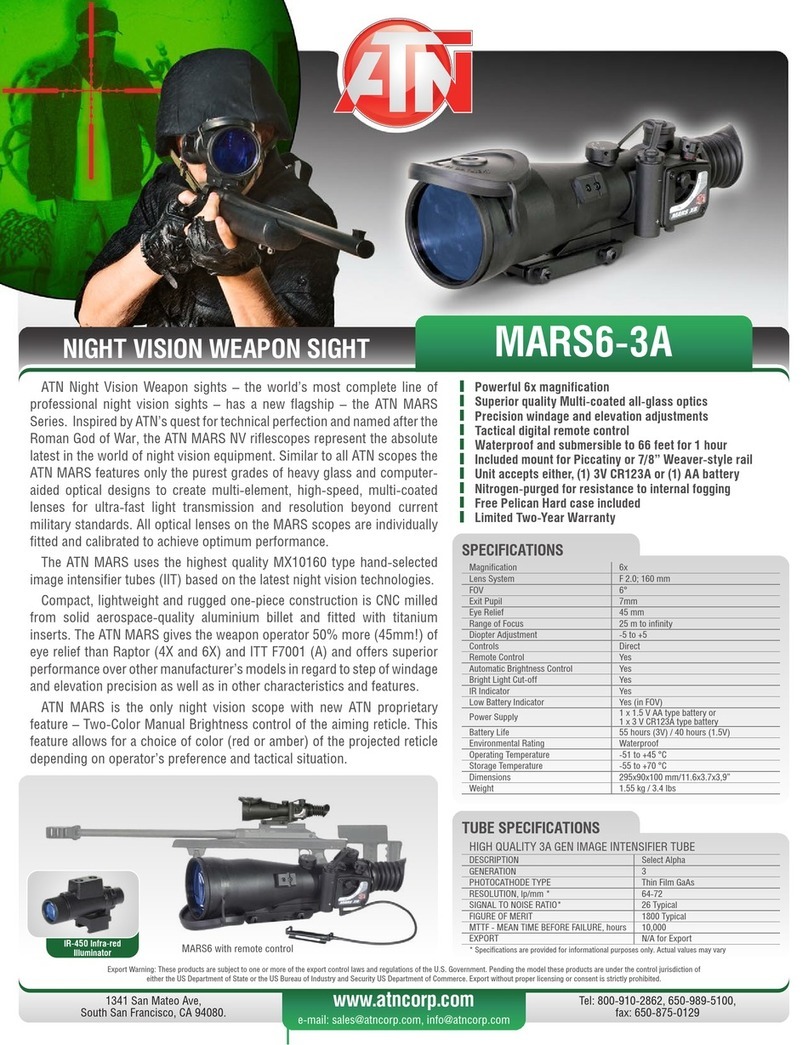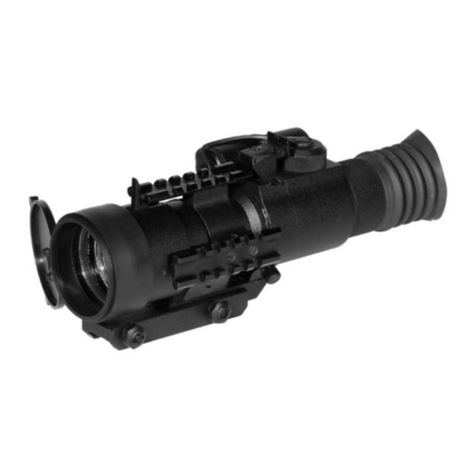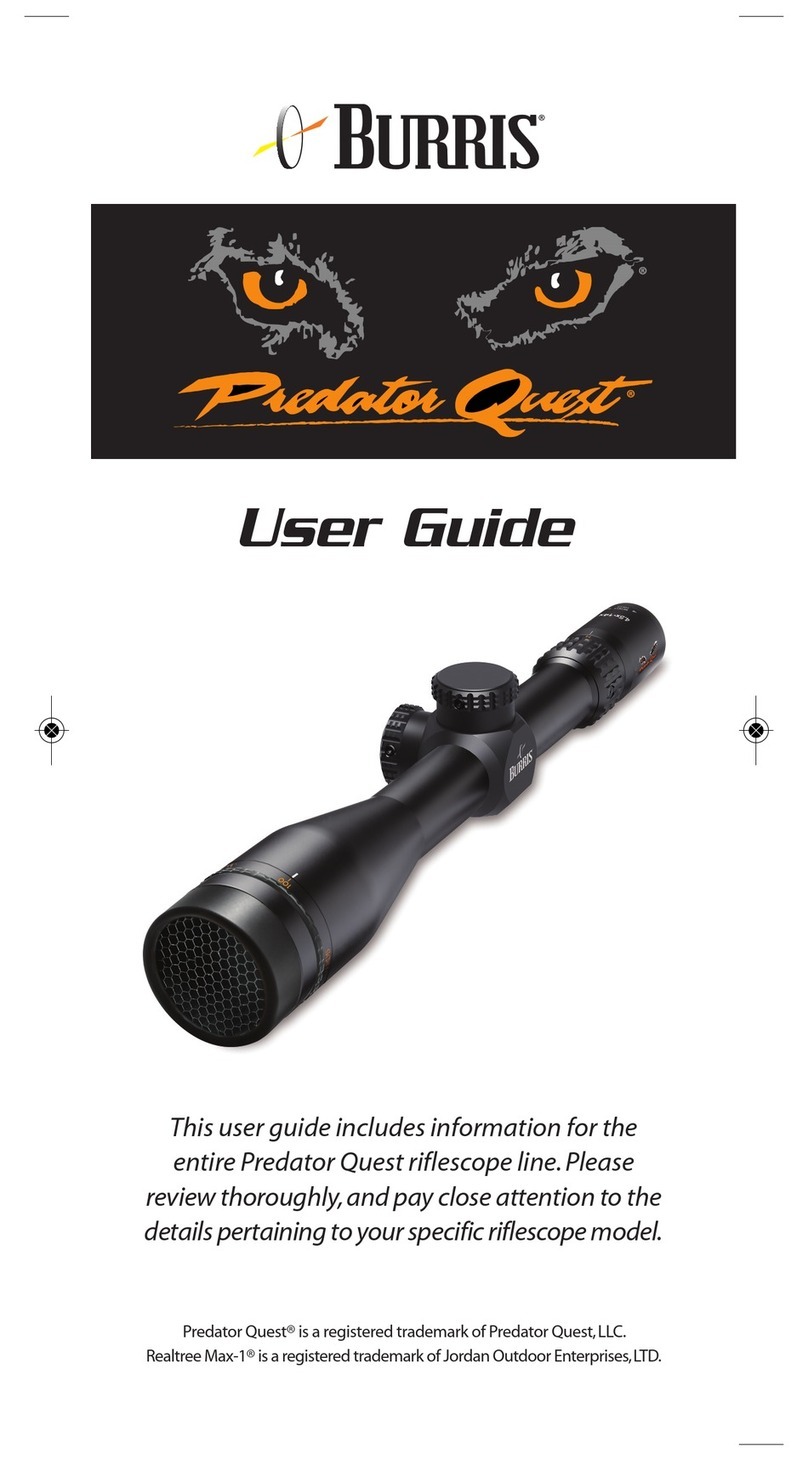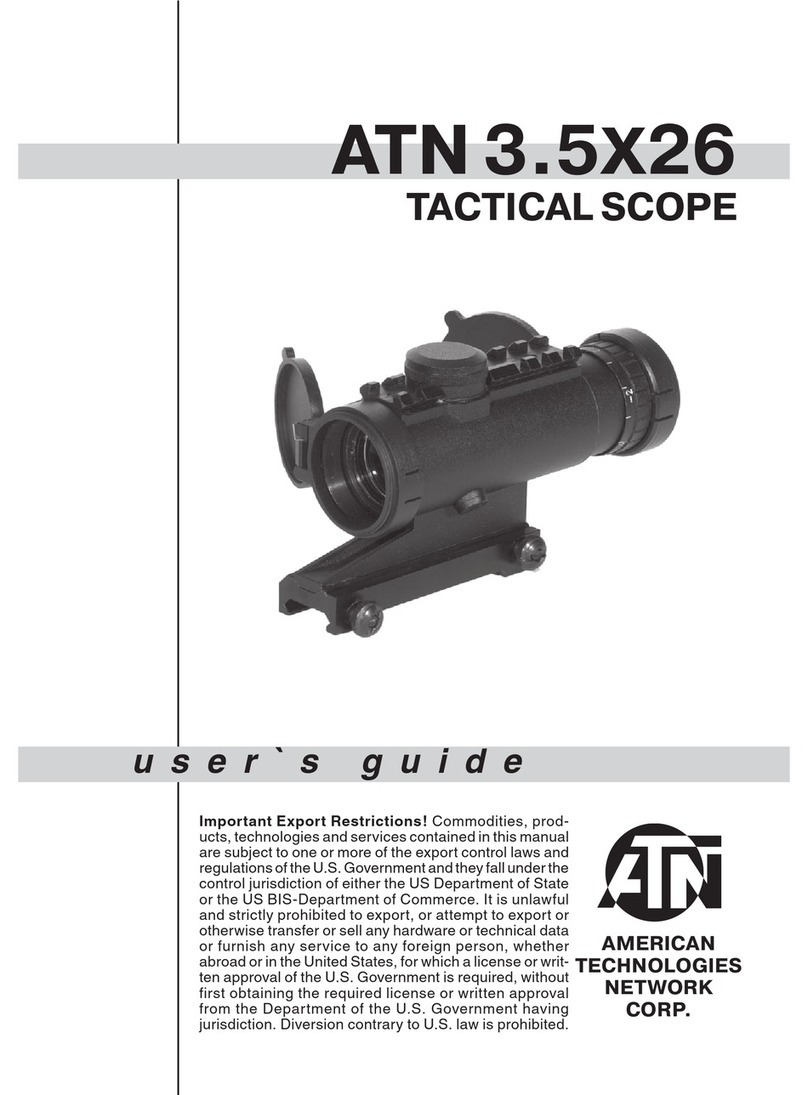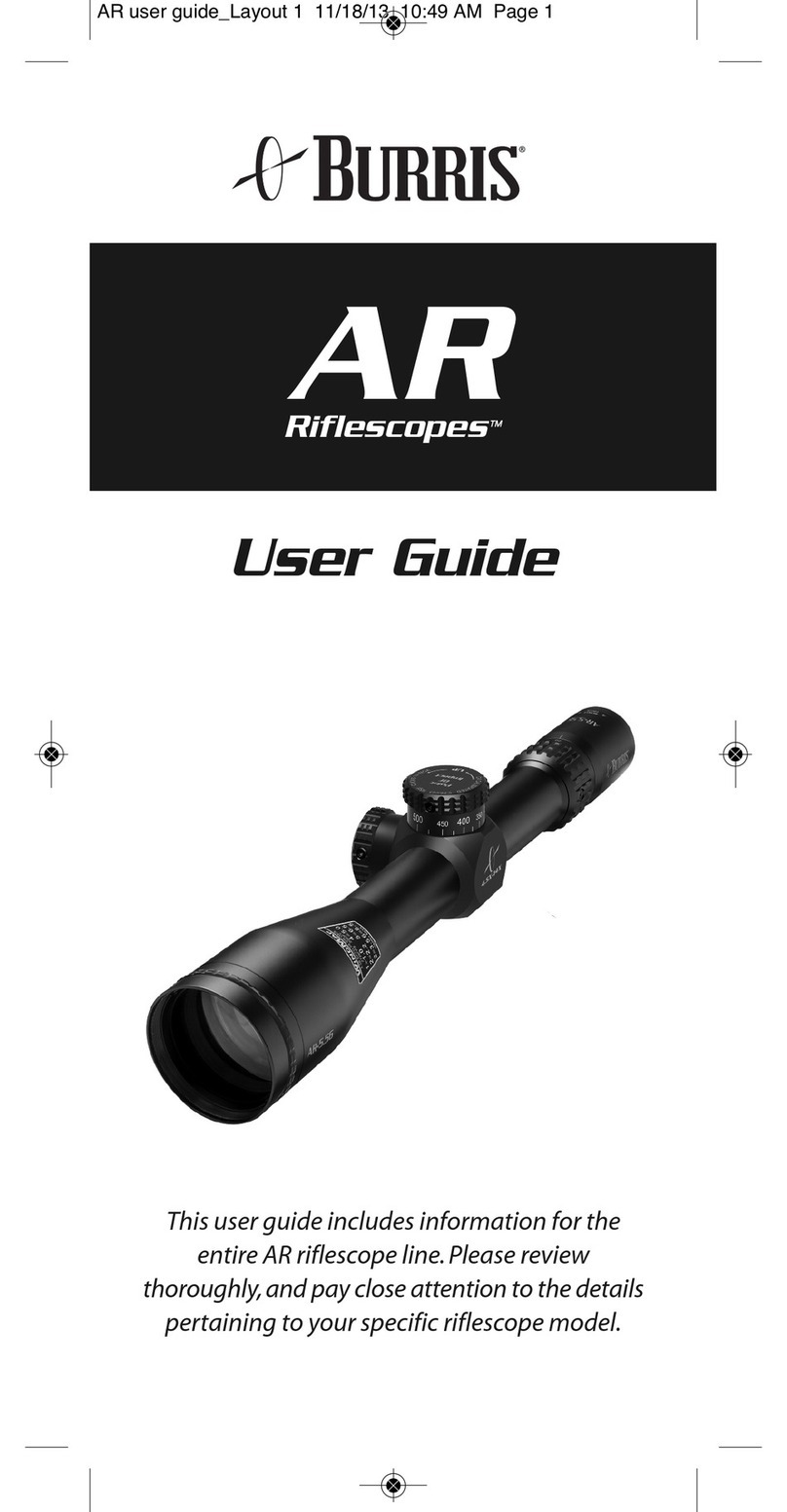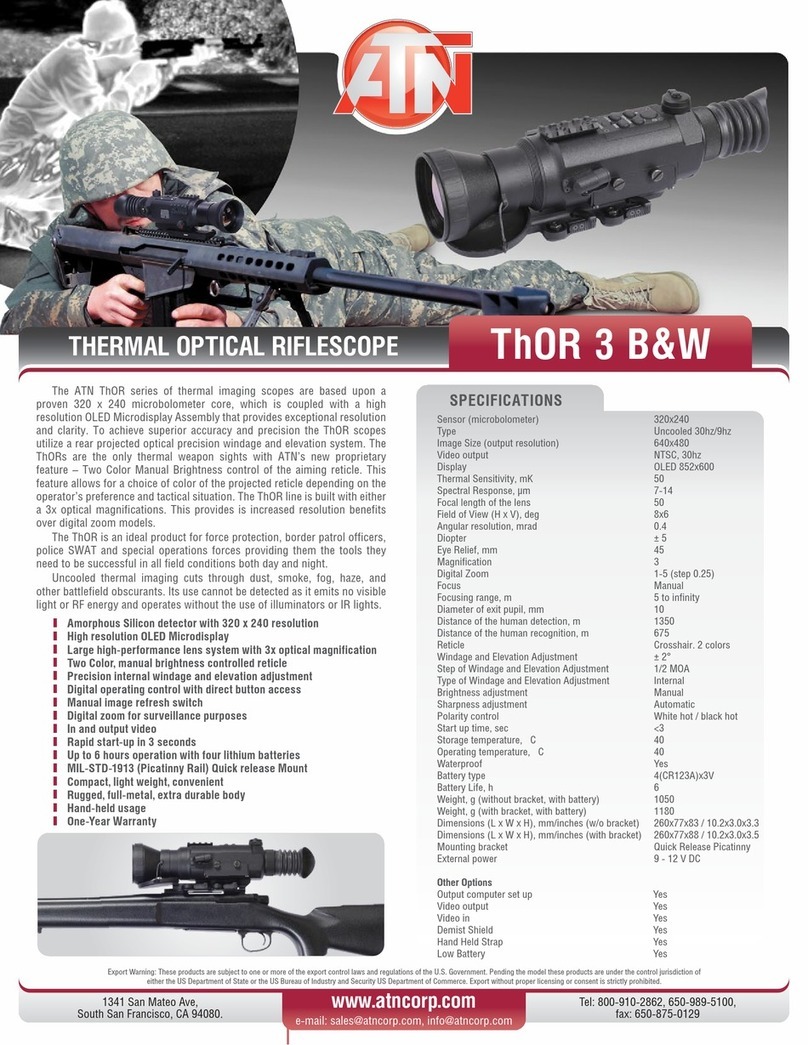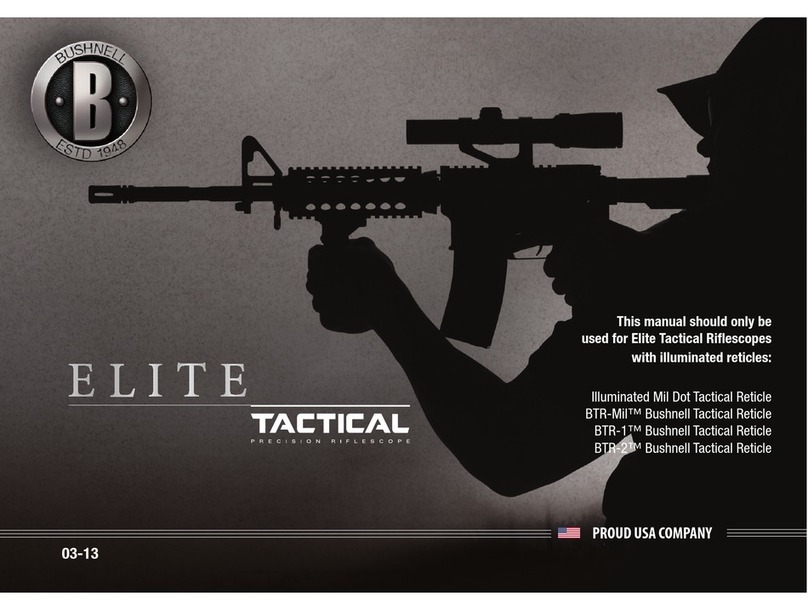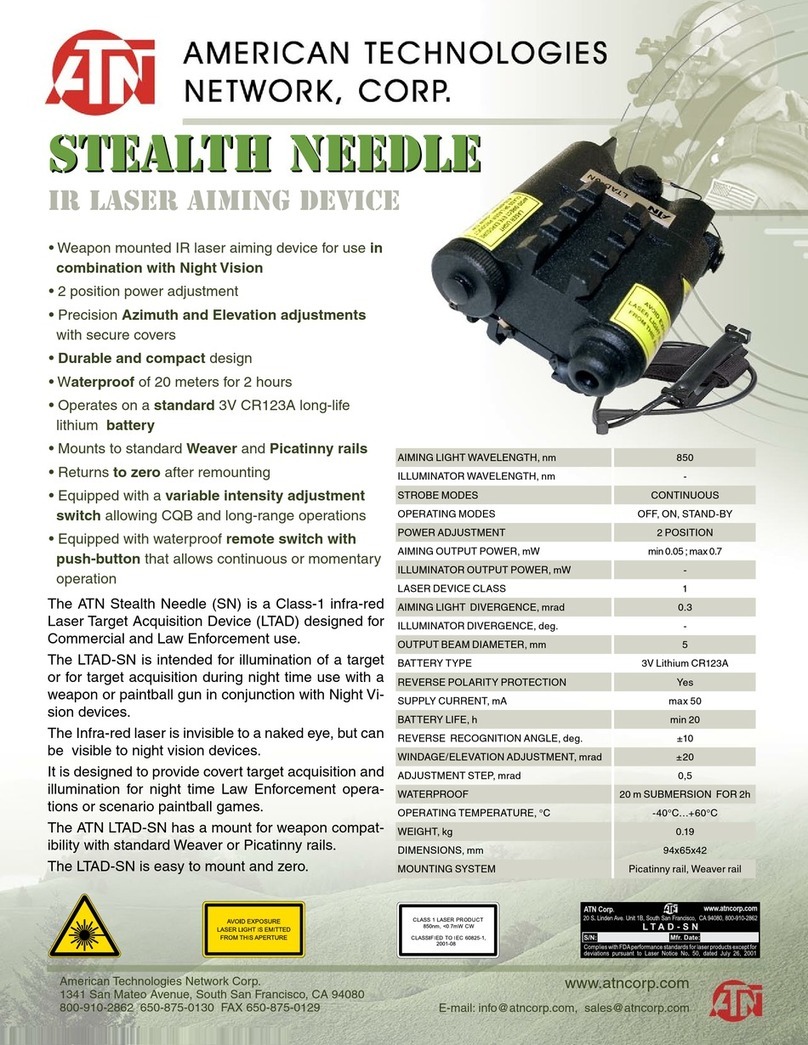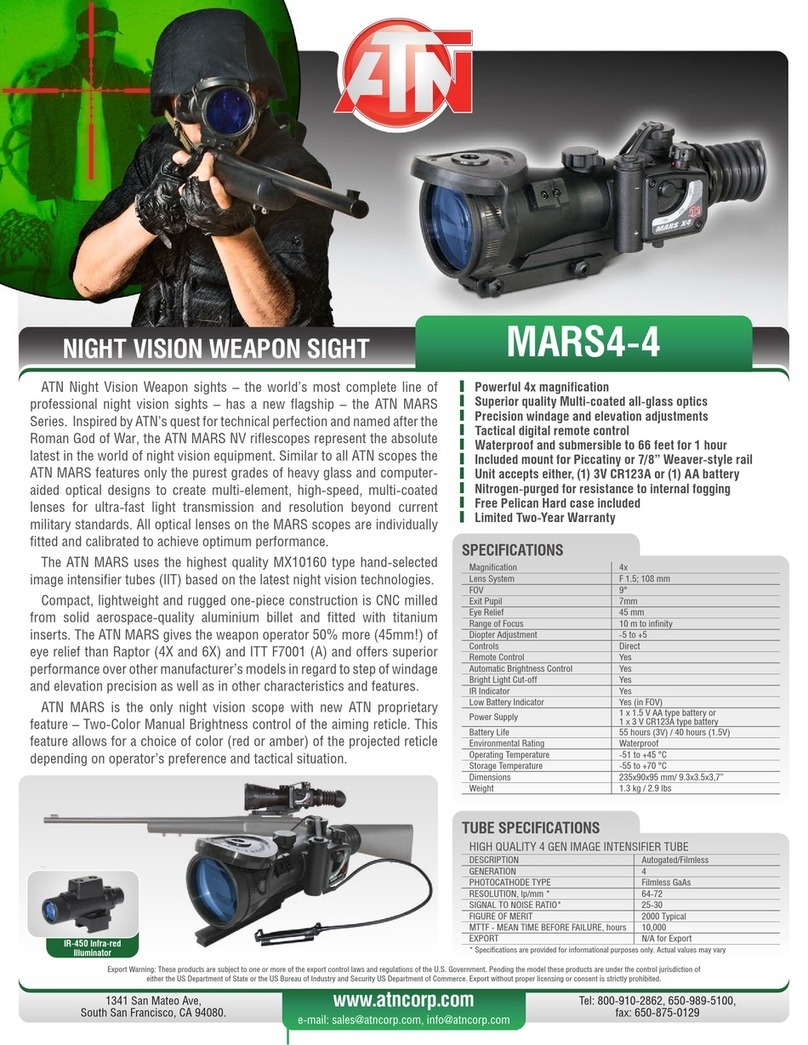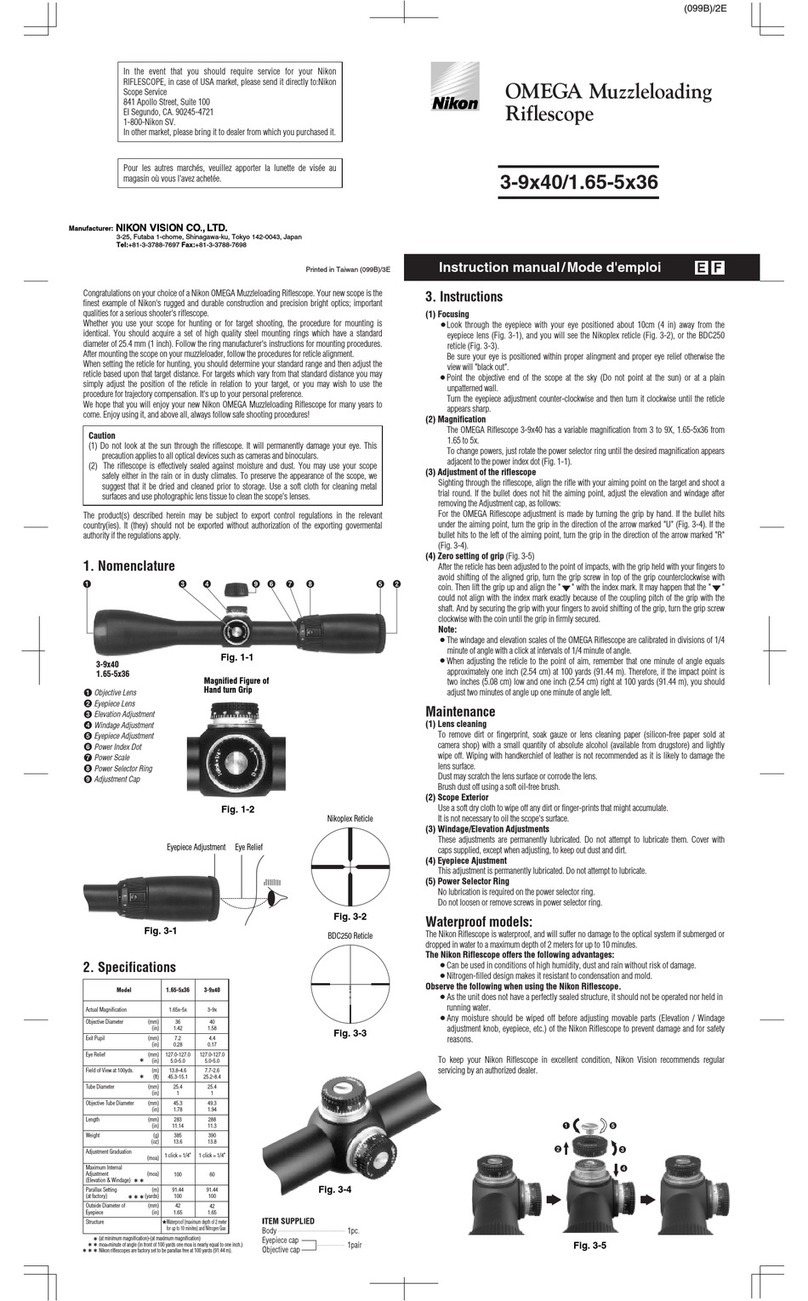
6
Using the Night Vision Eyepiece as monocular
As standard the NV monocular gives an inverted (upside-
down) image.
To provide a ‘normal’, non-inverted image, you need to
attach an optical inverter
to the back of the NV’s existing eyepiece (4). This is done
by screwing it in clockwise.
Warning ! Do not overtighten or misalign the inverter.
The NV Eyepiece is now ready for use as a night vision
monocular.
To increase the magnification of the NV Eyepiece
(standard magnification 1x),
you can use the optional 3x magnifier lens which provides
3x image magnification.
The 3x magnifier lens can be fitted in two ways:
- Install the magnifier 3x with the supplied adapter ring
(2).
Screw the adaptor ring on to the rear of the magnifier
lens. Push the lens/adaptor ring over the front of the NV’s
lens. This allows a quick push on/pull off magnification
capability, but is not designed for long term observation.
- Leave the adaptor ring (2) off and screw the magnifier
lens directly in to the screw
thread inside the front of the NV’s objective lens. This is
a more secure assembly designed for long term
observation.

